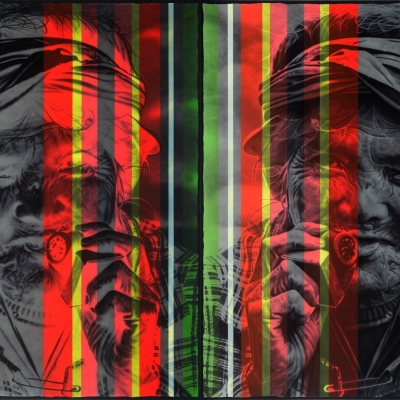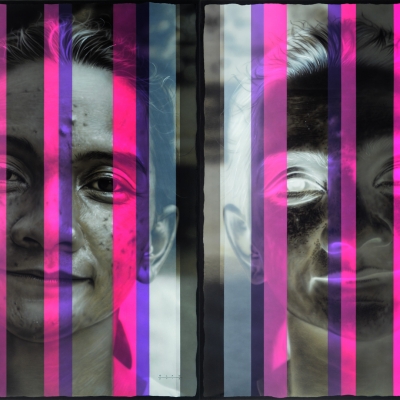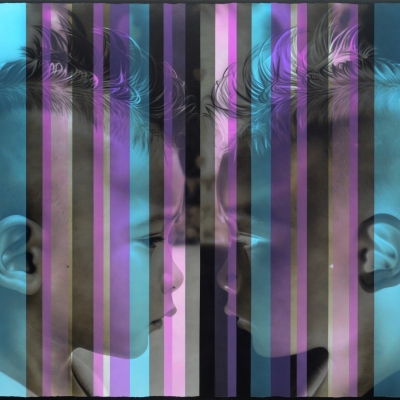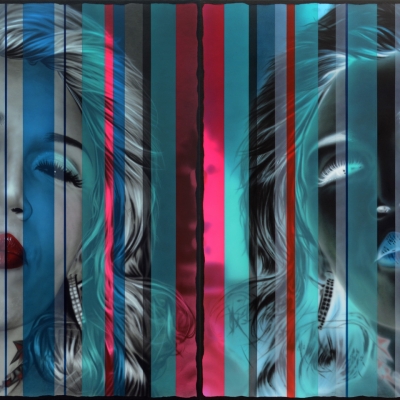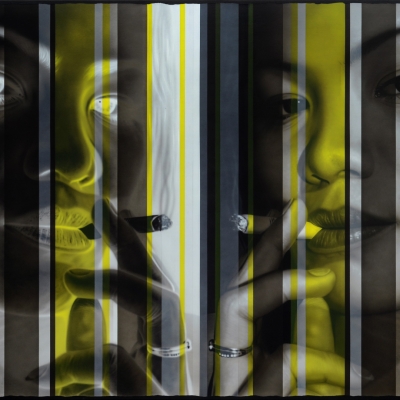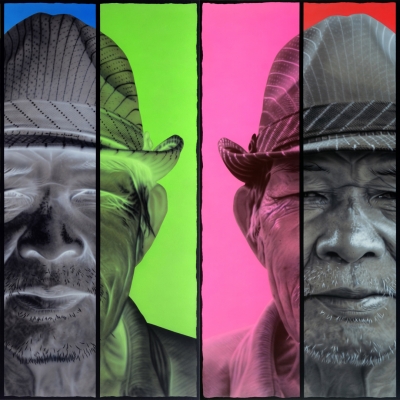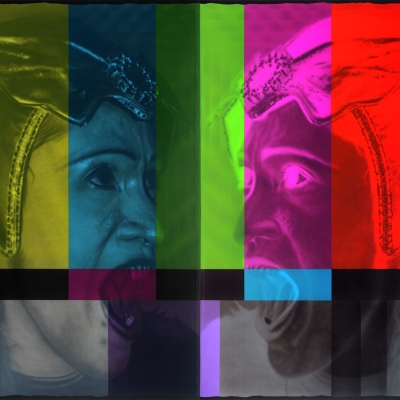Olan Ventura’s new painting exhibit at the West Gallery is a continuation of his series of double portraits that was earlier successfully exhibited at the Taksu Gallery in Singapore in July this year. While his first show, “Face the Strange” focused on stratospheric personalities in the arts and sciences, such as Madonna, Lady Gaga, and Michael Jackson, in this second show he deals with common people we meet on the street.
By this time, we are sure to know Olan Ventura (b. 1976 Malabon, Rizal) who is fast making a name for himself in the visual arts. After completing his degree in fine arts at the University of the East in 1998, he has since held a remarkable number of sixteen solo shows and has moreover won top prizes in several prestigious competitions, Juror’s Choice Awardee, Philippine Art Awards (sponsored by Philip Morris) in 2007, 3rd Place, 17th Young Painters Award Annual National Competition , Watercolor Category , Metrobank Foundation in 2000, and in 1998, First Place, Shell National Students Art Competition, and Artist of the Year, University of the East. Olan Ventura is the second of the extraordinarily gifted Ventura brothers: the eldest being Ronald Ventura who recently broke auction records at Sotheby’s and the youngest fondly called “Manok” who is beginning to hold his own shows.
In Olan Ventura’s show in Singapore as in this West Gallery exhibit, he juxtaposes two identical images of a single subject, man or woman: the first image based on an existing photograph or painting is painted in acrylic in a hyperrealist style that captures all the minutiae of dots and creases of the skin marking the sensitive topography of the face; the second, also painted in acrylic, is a reverse or negative mirror image of the first , usually in monochrome, which throws into sharp relief the lights and darks of the first image.
This present Manila show of double portraits operates on the same principle as the Singapore exhibit and the works of both are painted in acrylic with extraordinary finesse and control of line, color, and tone. Some differences, however, are apparent. As has been mentioned, the Singapore show dealt with icons familiar to all in art, music, and technological communication. The Manila show, deals with common people that share our daily life. Upon closer look, however, the ordinary people usually have a more benign and positive expression—”what you see is what you get”, but the faces of the famous personalities are prone to betray an inner complexity—given their extraordinary situations and roles in First World societies–, are more nuanced, perhaps, with more than passing suggestions of neurosis and smoldering impulses.
Unlike the first which primarily brought out the contrast between positive and negative, this second set seems to be more concerned with layering. The basic layer of this set of double portraits still involves the contrast between positive and negative– between the corporeal image and its disembodied form in two distinct fields of color and tone. Now, this recent series is differentiated by a second layer of vertical bands of varying color and size laid upon the basic double image.
The abstract layer of colored vertical panels is indeed a formal device superimposed on a realistic image. These may call to mind the “zips” of the American artist Barnett Neuman who introduced a second level to his painting. These could be said to mute the distinct individuality of the faces and reduce them to a common modality. At the same time, they introduce a sense of rippling left-right movement to the faces and saves them from the purely static. Likewise, these colored bands absorb the numerous bright colors of their environment , a Third World context in which the colors of nature still dynamically interact with the growing automatism of urban life. The images in turn reflect them outwardly to assert their being- in- the- world. Thus, in these ways the colored abstract bands lend levels of signification to the double portraits.
This reinterpretation of the double portrait in the West Gallery shows Olan Ventura’s exuberant creativity as applied to the ever-changing phenomena around him which he rearranges and reconfigures into new meaningful structures that reveal countless possibilities for discovery and pleasure.




